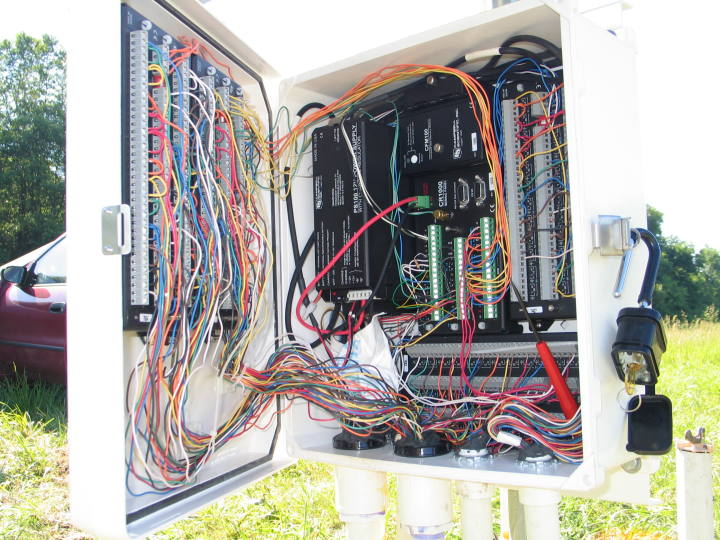|
Water quality at
contaminated sites must be monitored.
Typically this
involves water sampling from on-site
monitoring wells , a time-consuming and labor
intensive process.
I have developed
an automated system for long-term
geophysical monitoring through permanent
vertical resistivity probes (right).
By connecting
these probes to a CR1000 datalogger, several
multiplexers, and a solar power supply
(components from
Campbell Scientific, Inc. shown below), the electrical response of the
subsurface may be measured at specified
intervals over long periods
of time. These measurements can then
be related to the saturation state of the
subsurface and/or chemical properties in
contaminated sites. Utilizing this
relationship can decrease the need for
manual sampling.
This work was funded
by the
Michigan Space Grant Consortium Graduate
Research Fellowship.
|

Geophysical monitoring
probe with electrodes spaced at 5cm
intervals and thermistors installed at
intervals of 30cm. |

Automated monitoring
system, component parts from
Campbell Scientific, Inc. |
The system was developed and installed
in 2005 (below) in a field near a pond in Van Buren
County, Michigan. The monitoring
system functioned well over a test period of
nearly three years in a wide variety of
weather conditions. The location of
testing was not contaminated, and thus the
results related primarily to the saturation
state of the subsurface, with resistivity
increases relating to decreased saturation
state and resistivity decreases relating to
increased saturation state.
|